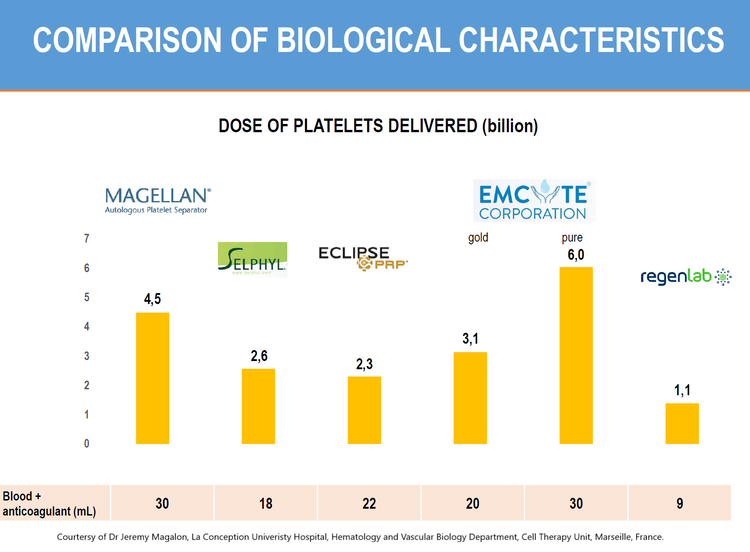Double Spin Pure PRP
The primary difference between single spin and double spin PRP (Platelet-Rich Plasma) lies in the centrifugation process and the resulting concentration of platelets in the final PRP product. Both methods are used to prepare PRP for various medical applications, but they differ in terms of platelet concentration and the types of conditions they are typically used for.
Single Spin PRP:
1. Centrifugation Process: In single spin PRP (Platelet-Rich Plasma), a single centrifugation step is used. The blood sample is centrifuged once to separate its components. This typically yields a PRP with a platelet concentration that is around 3-5 times greater than that of whole blood.
2. Applications: Single spin PRP is often used in aesthetic and dermatological procedures, such as facial rejuvenation, hair restoration, and scar reduction. It may also be used in some musculoskeletal applications, but it generally has a lower platelet concentration compared to double spin PRP.
Double Spin PRP:
1. Centrifugation Process: Double spin PRP (Platelet-Rich Plasma) involves two centrifugation steps. The initial spin separates the blood into its primary components, and then a second spin is used to further concentrate the platelets. This typically results in a PRP product with a higher platelet concentration, often exceeding 5-7 times that of whole blood.
2. Applications: Double spin PRP is commonly used in orthopedics, sports medicine, and other musculoskeletal applications. This higher platelet concentration is thought to be more effective in promoting tissue healing and regeneration, making it suitable for conditions like tendonitis, ligament injuries, and osteoarthritis.
Key Points of Comparison:
1. Platelet Concentration: The most significant difference is the platelet concentration achieved. Double spin PRP generally yields a higher platelet concentration than single spin PRP.
2. Clinical Applications: Single spin PRP is often used for cosmetic and dermatological applications, while double spin PRP is favored for musculoskeletal conditions and injuries.
3. Effectiveness: Double spin PRP is believed to be more effective in promoting tissue healing due to the higher platelet concentration, making it a preferred choice for some clinical scenarios.
At Minimally Invasive Center of New York (MICNY), we solely rely on industry leading Plymouth Medical EmCyte double-spin Pure PRP.
Dr. Mandle and other scientists did a head to head comparison study, in which five commercial PRP platforms: EmCyte PurePRP II, Arteriocyte MAGELLAN, Stryker REGENKIT THT, and ECLIPSE PRP, were included in a paired sample design with blood from each of the 4 donors processed on all platforms. They found that mean platelet recoveries were 78% for GS60-PurePRP, 81% for the GS30-PurePRP, and 62% for the MAGELLAN platforms. Platelet recovery for the two gel systems each averaged 35% for REGEN and 30% for ECLIPSE. The average platelet concentration factor was 6.6 times baseline for the PurePRP systems and 5.7 time baseline for the MAGELLAN platform, and approximately one-half the starting blood platelet concentration for the two gel-based systems. There was no evidence of device-dependent platelet activation and platelet response to ADP agonist was normal for all PRP products.
In the same study, the platelet products from the two gel systems had essentially no red cells. Retentions of mononucleated cells were 59% in the GS60-PurePRP product, 45% in GS30-PurePRP and 50% in the MAGELLAN product. Greater than 90% of the granulocytes were removed with the GS60-PurePRP and GS30-PurePRP systems. MAGELLAN product retained 16% of the granulocytes. The gel-based separator PRP products were essential free of
all white blood cells.
It’s important to note that the choice between single spin and double spin PRP should be made in consultation with a qualified healthcare provider. The specific application, the patient’s condition, and the desired treatment outcomes should all be considered when determining which type of PRP preparation is most appropriate. Additionally, the equipment, protocols, and terminology used in PRP preparation can vary among healthcare providers and clinics, so it’s essential to discuss the specifics of the procedure with your healthcare provider to understand what type of PRP will be used and why.



